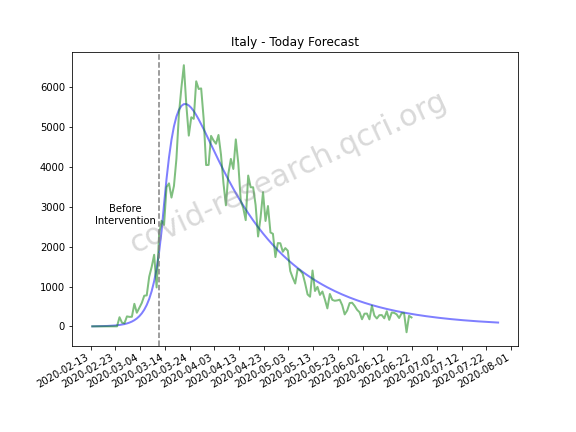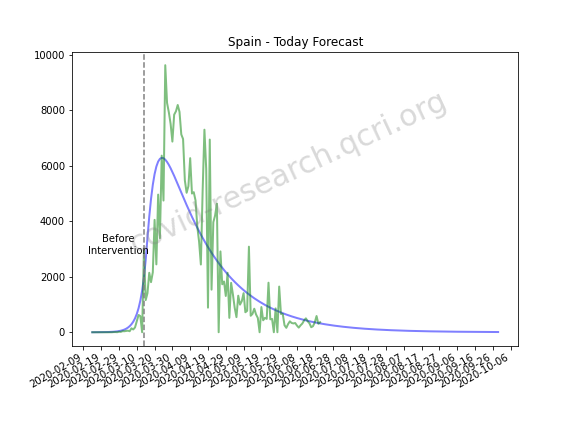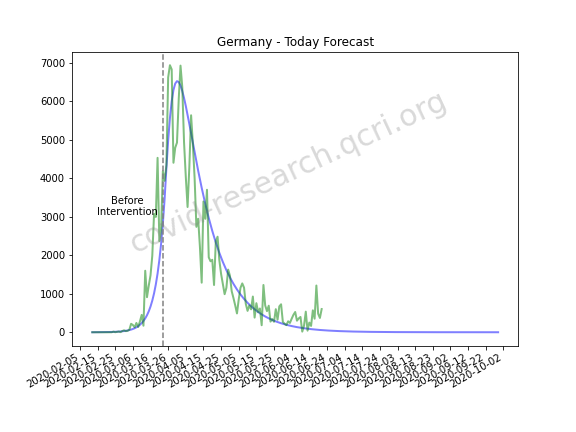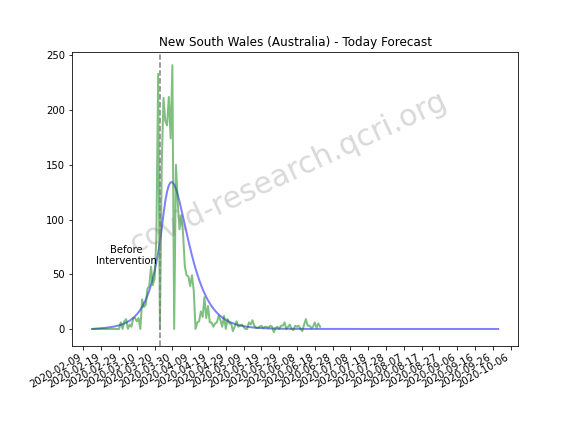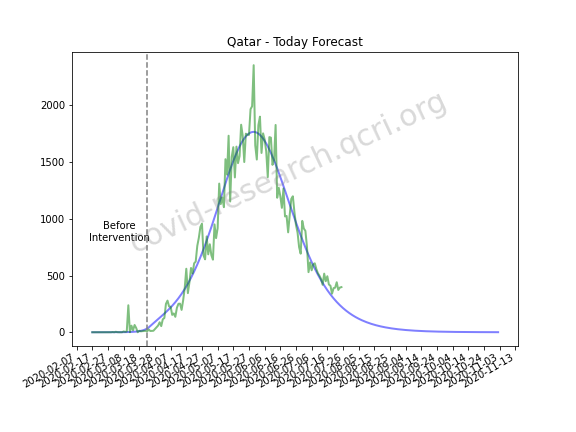Forecast of future confirmed new cases
Using auto-differentiation on an extended SEIR model, we optimize per-country epidemic parameters to forecast future outcomes of the COVID-19 pandemic. View 1-page Paper
The following charts show the 6-weeks forecast of future confirmed new cases, given the current observed data. Data is daily updated from the following three sources:
How good is this forecast?
Using older data from areas that have been affected earlier, we can train our model up to an older data and use the following days for validation. Note, training the model here means estimating the parameters of the ODE system in a data-dependent manner. The time series is split into training and test intervals. Data from the training interval is used to estimate the parameters and make a forecast for the test interval. The observed data in the test interval is shown in "red" while the matching forecast is on the "blue" line.
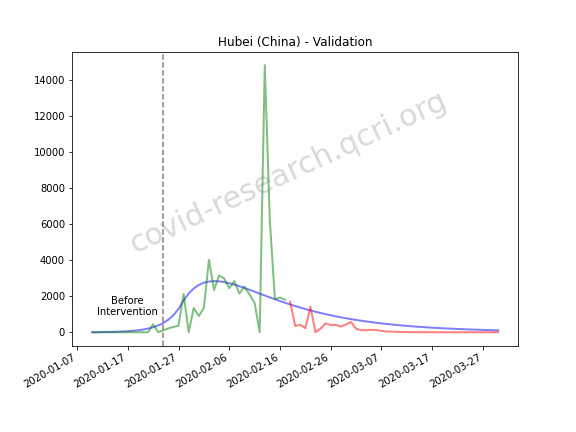
Hubei (China)
Training data up to February 18. Note: despite the peak on February 12, given by a change in the confirmation policy, the model show robustness to outliers.
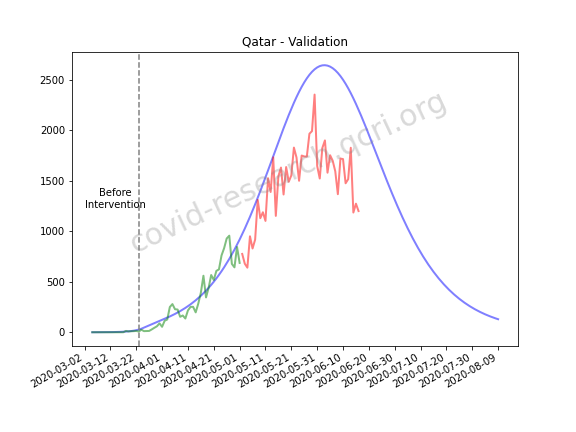
Qatar
Validation using training data up to May 1st.
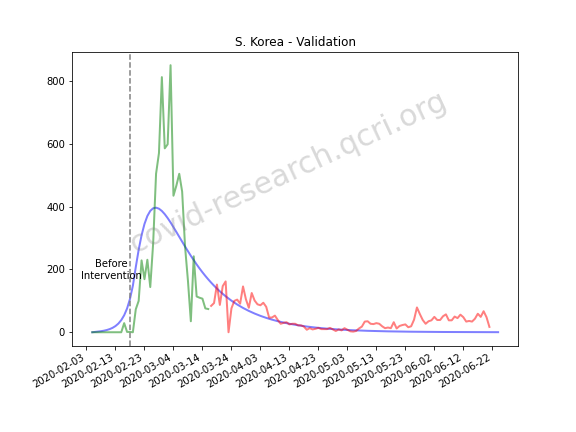
South Korea
Despite no lockdown intervention was enforced, intervention time is set as February 19, when the reported outbreak caused residents to spontaneously isolating and practicing social distancing.
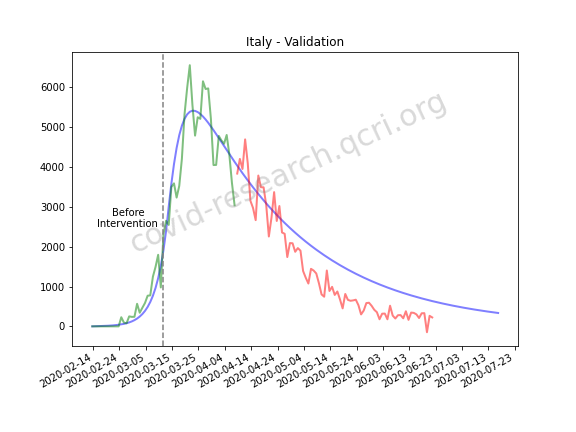
Italy
Validation using training data up to March 26.
